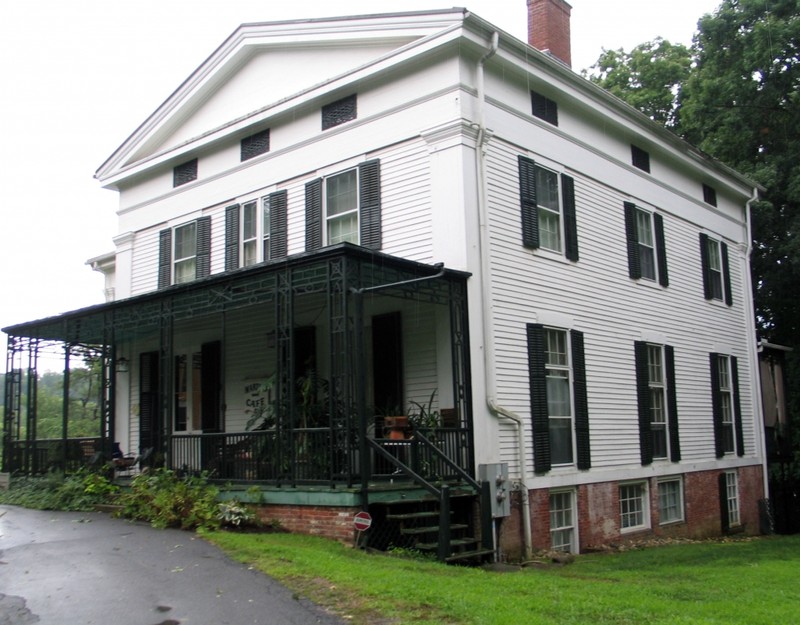Austin F. Williams Carriagehouse and House
Introduction
Text-to-speech Audio
Images
Abolitionist Austin F. Williams lived in this home and housed the Mende rebels who had seized control of the Amistad the year prior to the completion of this home.

Backstory and Context
Text-to-speech Audio
In 1839, despite most of South and North America having outlawed the importation of human slaves, about 500 captives were taken from present-day Sierra Leone to Havana, Cuba to be added to the slave trade. Among these were 53 captives (49 adult males and 4 children, 1 boy and 3 girls), purchased by Spaniards Jose Ruiz and Pedro Montes; on June 28, 1839, the 53 kidnapped Africans were put on the ship the Amistad, headed for sugar plantations in present-day Camaguey, Cuba.
Soon, realizing that they vastly outnumbered the ship’s crew, the captives rebelled, breaking their chains, and attacking the crew. On July 2, they took control of the Amistad. However, they relied on their Spanish captors to navigate the ship, and instead of Sierra Leone, they found themselves near the coast of Long Island.
The ship was intercepted by the United States’ Navy, who promptly freed Ruiz and Montes and imprisoned the African rebels in Connecticut (as New York had abolished slavery by this point). Local abolitionists in Connecticut worked to free the Amistad rebels and a trial was held in Hartford. After much debate and intercession by former president John Quincy Adams, the United States’ Supreme Court ultimately freed the rebels, but gave salvage rights to the Navy officers who intercepted the ship; thus, funds had to be raised to send the Africans back to Sierra Leone. In the meantime, abolitionists in Farmington, CT housed them.
The Amistad rebels (also known as the Mendi Africans) were able to leave Connecticut and return to Africa in November 1841. The Mendi stayed about eight months in Connecticut, and for most of that time, they lived here, in the Carriagehouse. Williams supported the abolitionist movement and likely hid escaped slaves here on his property, although direct records of this more clandestine activity are difficult to obtain and would have been kept secret owing to the opposition abolitionists faced from most white residents and the occasional violence that befell abolitionists. After the Civil War, Williams assisted former slaves as a director of the Freedman's Bureau.
Sources
Austin F. Williams Carriagehouse and House, National Historic Landmark Nomination form, United States Department of the Interior, National Park Service, July 17, 1988.
Greenspan, Jesse. How the Amistad Rebellion, and Its Extraordinary Trial, Unfolded, History. October 15th 2020. Accessed November 4th 2020. https://www.history.com/news/the-amistad-slave-rebellion-175-years-ago.
The Amistad: A Detailed Timeline, National Parks Service. Accessed November 4th 2020. https://www.nps.gov/subjects/travelamistad/upload/Timeline_Detailed.pdf.
